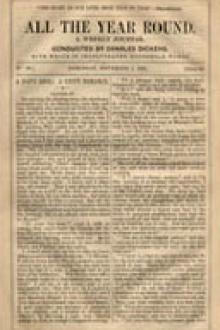Struggles and Triumphs P. T. Barnum (the beginning after the end read novel .TXT) 📖

- Author: P. T. Barnum
Book online «Struggles and Triumphs P. T. Barnum (the beginning after the end read novel .TXT) 📖». Author P. T. Barnum
Quite a number of men at once availed themselves of my offer, and eventually succeeded in paying for their homes without much effort. I am sorry to add, that rent is still paid, month after month, by many men who would long ago have owned neat homesteads, free from all incumbrances, if they had accepted my proposals and had signed and kept the temperance pledge, and given up the use of tobacco. The money they have since expended for whiskey and tobacco, would have given them a house of their own, if the money had been devoted to that object, and their positions, socially and morally, would have been far better than they are today. How many infatuated men there are in all parts of the country, who could now be independent, and even owners of their own carriages, but for their slavery to these miserable habits!
I built a number of houses to let, in order to accommodate those who were unable to buy. I find this the most unpleasant part of my connection with the new city. The interest on the investment, the taxes, repairs, wear and tear, and insurance render tenant-houses the most unprofitable property to own; besides which the landlord is often looked upon by the tenants as an overbearing, grasping man and one whose property it is their highest duty to injure as much as possible; for all concerned therefore, it is much better that every person should somehow manage to own the roof he sleeps under. Men are more independent and feel happier who live in their own houses; they keep the premises in neater order, and they make better citizens. Hence I always encourage poor people to become householders if possible, for I find that oftentimes when they have lived long in one of my houses they think it very hard if the property is not given to them. They argue that the landlord is rich and would never feel the loss of one little place, not stopping to consider that the aggregate of a great many “little places” thus given away would make the landlord poor—nor would the tenants be benefited so much by homes that were given to them as they would by homes that were the fruits of their own industry and economy.
The land in East Bridgeport was originally purchased by me at from $50 to $75, and from those sums to $300 per acre; and the average cost of all I bought on that side of the river was $200 per acre. Some portions of this land are now assessed in the Bridgeport tax-list at from $3,000 to $4,000 per acre. At the time I joined Mr. Noble in this enterprise, the site we purchased was not a part of the City of Bridgeport. It is now, however, a most important section of the city, and the three bridges connecting the two banks of the river, and originally chartered as toll-bridges, have been bought by the city and thrown open as free highways to the public. A horse railroad, in which I took one-tenth part of the stock, connects the two portions of the city, extending westerly beyond Iranistan and Lindencroft, while a branch road runs to the beautiful “Seaside Park” on the Sound shore.
The eastern line of East Bridgeport, when I first purchased so large a portion of the property, was bounded by a long, narrow swale or valley of salt meadow, through which a small stream passed, and which was flooded with salt water at every tide. At considerable expense, I erected a dam at the foot of this meadow, and thus converted this heretofore filthy, repulsive, mosquito-inhabited and malaria-breeding marsh into a charming sheet of water, which is now known as Pembroke Lake. If this improvement had not been made, in all probability the eastern portion of my property would never have been devoted to dwelling houses; as it is, Barnum Street has been extended by means of a bridge across the lake, and the eastern shore is already studded with houses. The land on that side of the lake lies in the town of Stratford, and the growth of the new settlement promises to be as rapid as that of East Bridgeport.
General Noble, in laying out the first portion of our new city, named several streets after members of his own family, and also of mine. Hence, we have a “Noble” Street—and a noble street it is; a “Barnum” Street; while other streets are named “William,” from Mr. Noble; “Harriet,” the Christian name of Mrs. Noble; “Hallett,” the maiden name of my wife; and “Caroline,” “Helen,” and “Pauline,” the names of my three daughters. There is also the “Barnum School District” and schoolhouse; so that it seems as if, for a few scores of years at least, posterity would know who were the founders of the new, flourishing and beautiful city. We have yet another enduring and ever-growing monument in the many thousands of trees which we set out and which now line and gratefully shade the streets of East Bridgeport.
Figures can scarcely give an appreciable idea of the rapid growth and material prosperity of this important portion of the City of Bridgeport; but the city records show that my first purchase of land on that side of the river was appraised in the Bridgeport assessment list, in October, 1851, at $36,000, while in July, 1859, the same real estate, with improvements, less the Washington Park, the Public School lot in Barnum District, the land for streets, and four church lots, was valued in the city assessment list at $1,200,000. When we bought the property there were but six old farm houses on the entire





Comments (0)